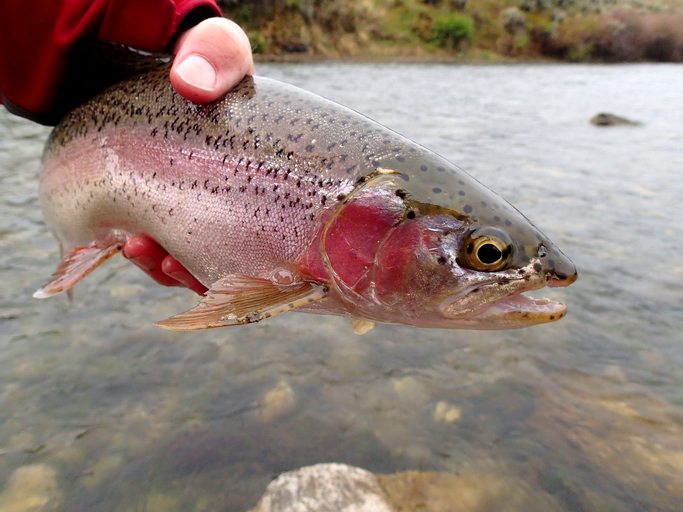Two recent studies from the Univsersity of Alberta and Stanford have emphasized the deleterious effects of petroleum spills on the health of fish species, freshwater and saltwater, respectively.
A study led by Daniel Alessi, Greg Goss, and Jon Martin from the Univesity of Alberta focused on the impact of fluids produced in hydraulic fracturing on rainbow trout. The second study, conducted by researchers at Stanford University’s Hopkins Marine Station, identified a chemical in petroleum that causes cardiotoxicity in fish exposed to oil spills.
In a news article on the University of Alberta’s website, Goss said of the study, “The end goal is to understand the effects of the spills, should they occur, on native aquatic animals.” Goss continued, “This will help in both environmental policy, water treatment options for onsite water management, and improved mitigation policy and programs.”
Goss et al.’s study looked specifically at hydraulic fracturing (HF) flowback and produced water (HF-FPW), which found that exposure to HF-FPWs resulted in significant induction of the biomarker ethoxyresorufin-O-deethylase in both liver and gill tissues of rainbow trout. Tracing the effects, the team found that “the overall results suggested HF-FPW could cause significant adverse effects on fish, and the organic contents might play the major role in its toxicity.” Effects noted by the team on the rainbow trout from the exposure to HF-FPWs included oxidative stress, endocrine disruption, and biotransformation.
The Stanford study found that the pollutant, phenanthrene, a type of polycyclic aromatic hydrocarbon—known carcinogens—blocked the excitation-contraction pathways that regulate heart beats in two species of tuna and a mackerel, causing both arrhythmia and weaker contraction of heart cells. “The mechanism, which alters cardiac function in fish and the protein that phenanthrene targets—the ion channel responsible for potassium movement from the cell—is also present in humans,” said Fabien Brette, a research associate at Stanford University and co-lead author of the current paper, to Science Daily. Furthermore, phenanthrene is conserved across vertebrate species, leading the researchers to conclude: “Our findings therefore suggest that phenanthrene may be a major worldwide cause of vertebrate cardiac dysfunction.”
In conjunction, the two studies help describe the specific problems that need to be addressed to preserve the health of aquatic species in the wake of petroleum spills, which the Calgary Herald noted Goss’ paper puts at 2,500 in the province of Alberta between 2011 and 2014.
The research from the University of Alberta, Effects on Biotransformation, Oxidative Stress, and Endocrine Disruption in Rainbow Trout (Oncorhynchus mykiss) Exposed to Hydraulic Fracturing Flowback and Produced Water, can be found through the link.
And the Standford paper, A Novel Cardiotoxic Mechanism for a Pervasive Global Pollutant.













